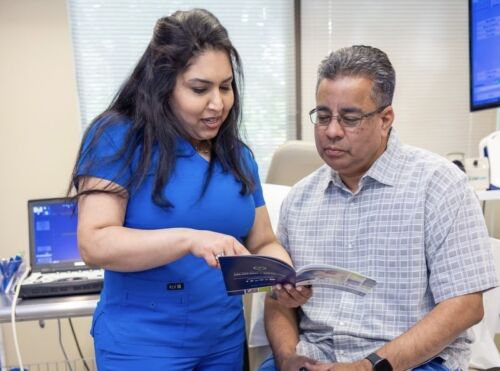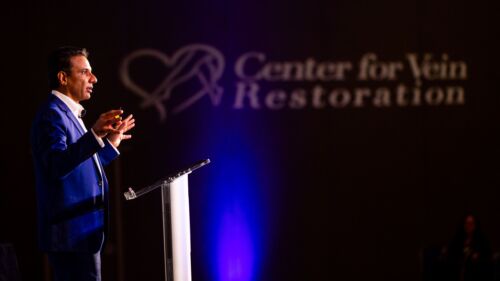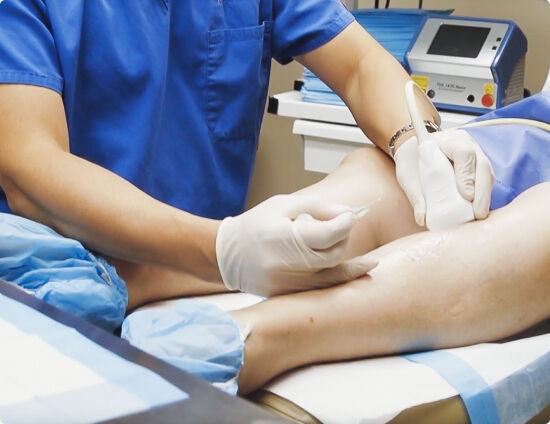Medication is usually an effective treatment for most illnesses. Unfortunately, it will take more than just a pill to cure your varicose veins.
Medication can manage or even cure a number of illnesses. But if you’re struggling with the pain, swelling, and unsightly appearance of varicose veins, a pill is not the answer!
Despite what you may have seen on the Internet about “miracle cures” for varicose veins, the most effective treatments are medical procedures that address the underlying cause of the varicose veins. Although at-home remedies may temporarily relieve discomfort, your best chance for eliminating your varicose veins is a minimally invasive procedure performed by a vein specialist.
The Causes & Symptoms of Varicose Veins
Within your veins, tiny valves direct blood to your heart with the help of the pressure created by the muscle contractions that occur when you move. However, veins, vein walls, and these tiny valves can be weakened by injury or wear and tear over the years. When that happens, blood backflows and pools within the vein. Varicose veins can develop, causing pain, itching, and general discomfort. If left untreated, weakened veins may lead to serious complications. These include open wounds, changes in skin texture, excessive bleeding from bumps and cuts on the varicose veins, and possible blood clots.
How to Eliminate Varicose Veins (Without a Pill)
Managing varicose vein pain using at-home therapies can temporarily reduce discomfort. However, only a procedure that removes the diseased vein can eliminate the root cause of the discomfort permanently.
At-home Varicose Vein Therapies
If you’re diagnosed with varicose veins, your vein specialist will recommend a conservative course of at-home treatments to alleviate the pain and swelling, such as:
Wearing Compression Stockings. Only a vein specialist can measure your legs for a customized fit. Compression stockings that are tailored to meet your unique needs and lifestyle can offset the damaging effects of high pressure in the veins and help improve circulation.
Exercising. Walking, swimming, and bike riding strengthen calf muscles. Strong calf muscles help the veins pump blood, reducing pain and swelling.
Staying Active. When you sit or stand for an extended time, blood tends to pool in the veins. Get the blood moving by walking whenever you have the opportunity or simply flexing your ankles when you sit.
Elevating Your Legs. Propping your legs on a pillow, table, or wall for as little as 15 minutes a day helps blood flow in the right direction back to the heart.
Losing Weight. Your weight affects your veins. Your veins cannot function normally when extra pounds add pressure. Maintain an ideal weight and lift that pressure off your veins by exercising and eating healthily.
Medical Procedures
Minimally invasive medical procedures can close or remove the varicose vein completely. Nowadays, these treatment modalities are minimally invasive and can be done as outpatient procedures under local anesthesia, allowing for a quick recovery time. Some of the most commonly performed procedures for varicose veins include:
Sclerotherapy. During sclerotherapy, a safe solution called a sclerosant is injected to irritate and close the walls of the diseased vein. Blood then diverts to healthier veins, and the bulging vein eventually fades.
Thermal Heat Ablation. Endovenous laser ablation and radiofrequency ablation are both minimally invasive procedures. The vein doctor will insert a thin laser fiber and use heat to close problematic veins. Blood is diverted to healthier veins.
Ambulatory Phlebectomy. Not to be confused with the more invasive vein stripping procedure of the past, ambulatory phlebectomy is a procedure that involves the vein doctor removing the affected vein through two tiny incisions.
Over-the-counter NSAIDs (nonsteroidal anti-inflammatory drugs) such as ibuprofen or pain relievers can help reduce the pain of varicose veins. However, no pill will work as well as at-home treatments or medical procedures to reduce your discomfort and eliminate varicose veins.
Get The Facts About Varicose Vein Treatments
Center for Vein Restoration offers two clinic locations in Austin, Texas led by Aditya Gupta, MD, RPVI, DABVLM. Dr. Gupta is a board-certified internist specializing in acute and chronic conditions of the lower extremities. In 2018, Dr. Gupta completed a fellowship in Venous and Lymphatic Medicine at Center for Vein Restoration in Maryland.
As an experienced specialist in vascular disorders, Dr. Gupta can work with you to create a tailored treatment plan for your varicose veins. Contact him today for a consultation, or find a CVR location near you!
7900 Farm to Market Road 1826
Building 1, Suite 170
Austin, TX 78737
11111 Research Boulevard
Suite 400
Austin, Texas 78759

 About Vein Disease
About Vein Disease
 Spider Veins
Spider Veins
 Varicose Veins
Varicose Veins
 Vein Disease Treatments
Vein Disease Treatments
 Treating Spider Veins
Treating Spider Veins
 Treating Varicose Veins
Treating Varicose Veins
 About Us
About Us
 Patient Resources
Patient Resources
 Physician Resources
Physician Resources

